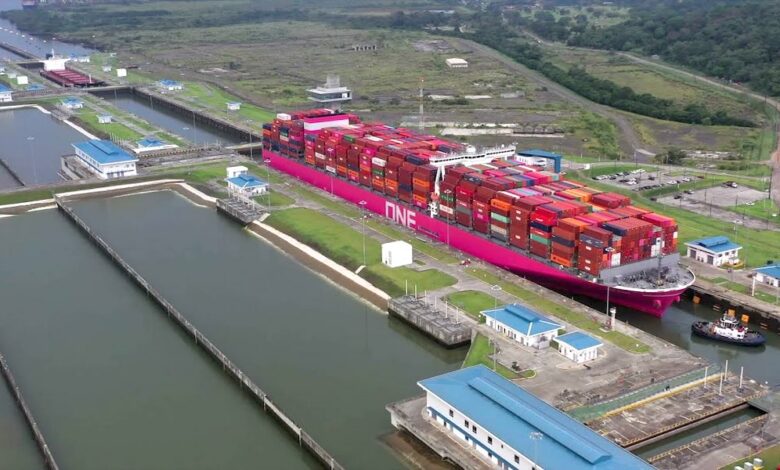Any higher? $4m paid in slot auction to transit perilously low Panama Canal

The average cost of transiting the Panama Canal in the seven years since it was expanded has been $900,000. With daily slots being halved thanks to drought, shippers are willing to fork out four or five times as much to get their prized cargoes to Asia.
Japan’s Eneos Group paid a $3.975m yesterday in an auction, smashing a record $2.85m set last week. As well as the slot auction cost, Eneos will also have to pay a regular transit fee for its northbound cargo of LPG.
For many other ships, looking at the queues at the canal, alternative routes via the capes and the Suez are being sought, with transit and draft restrictions set to be in place in Panama for many more months.
At its maximum, the canal can handle 40 ship transits a day, a figure that has been eroded this year as months of record drought take their toll. In tandem, canal administrators have been forced to cut maximum draft limits for ships transiting the waterway’s larger neopanamax locks by close to 2 m.
In 2023, there has been 41% less rainfall than usual, lowering Gatun Lake to unprecedented levels for this time of year. The lake is the vital slice of freshwater necessary for ships to transit as well as supplying water to more than 50% of the country’s population. Each vessel that transits through the set of locks uses approximately 52m gallons of water.
The Panama Canal Authority (ACP) has been urged to expedite long-held plans to buy neighbouring public lands to expand its watershed area to combat future droughts that have the potential to vex global supply chains.
Michael Kaasner Kristiansen, president of Panama-based shipping consultancy CK Americas, told sister title Splash Extra earlier this year the ACP should revisit plans first aired in 2019 to expand the watershed area significantly as well as looking at rejigging transit prices to tally with water usage as cargo ton versus water usage varies significantly for different ship sizes and segments.
The canal authorities are working with parliamentarians to get a 2006 law changed so that the canal can build a new reservoir – to be called Rio Indio – to keep the key Gatun Lake water levels high as well as providing potable water to the growing Panamanian population.
Shipping leaders are starting to air their grievances with the authorities in Panama. Jeremy Nixon, for instance, has sent a letter to the country’s president, in which the head of Ocean Network Express (ONE), the world’s sixth largest liner, questioned why “no significant infrastructure projects have gone ahead in Panama to increase fresh water supply to the locks from other catchment areas”. ONE is co-owned by Japan’s Mitsui OSK Lines (MOL), Nippon Yusen Kaisha (NYK) and Kawasaki Kisen Kaisha (K Line), three of the largest shipowners in the world.
Today there are a total of 99 ships waiting in queue to transit the canal from both ends, around 10% higher than the average of the last seven years. While southbound waiting times have been dropping over the last three weeks, ships queuing to head north have seen waiting times more than double in the first nine days of November.

here again an interesting perspective brought by commenter Chiefy in a Financial Time article dated November 1st:
I find the timing of these “droughts” coinciding with the Panamanians opening a new set of locks that are much much bigger, and thus result in much larger amounts of water being drained from the lake with the passing of each ship… to seem like more than just a coincidence. When commenting about this on another article recently another commenter found a link to a source for rainfall in Panama and there doesn’t appear to be any drought at all. I’ve been through the Panama Canal in both directions a number of times, and the new locks are on a totally different scale. Even with the original set of locks, the amount of water dumped out of the lake for each transit was enormous. The new ones increased that by multiples. This could just be a case of someone having made a bad (or overly optimistic, because they really wanted new locks) calculation and there just not being enough water in the lake to support locks any bigger than the original set. Maybe the rainfall plays a part, but I’d like to see evidence of that before ruling out bad engineering being the root cause.